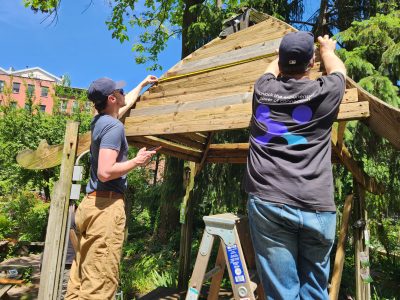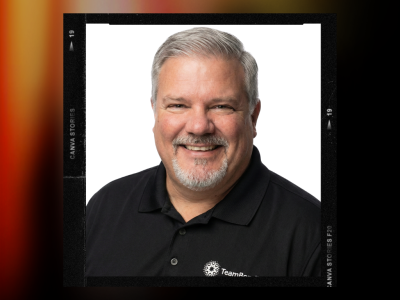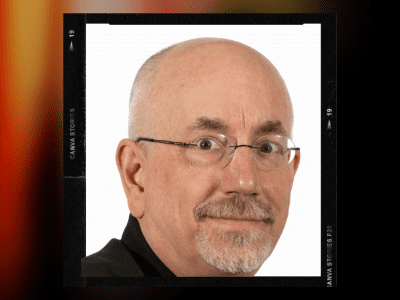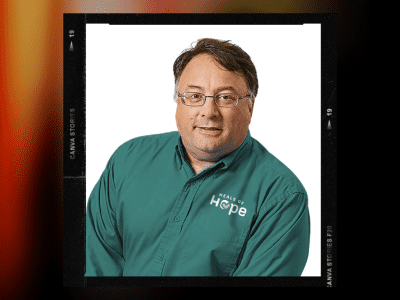STRONG TEAMS DON’T HAPPEN BY CHANCE 
CSR Meets Holiday Team Building
w/ Baylee Goldstein
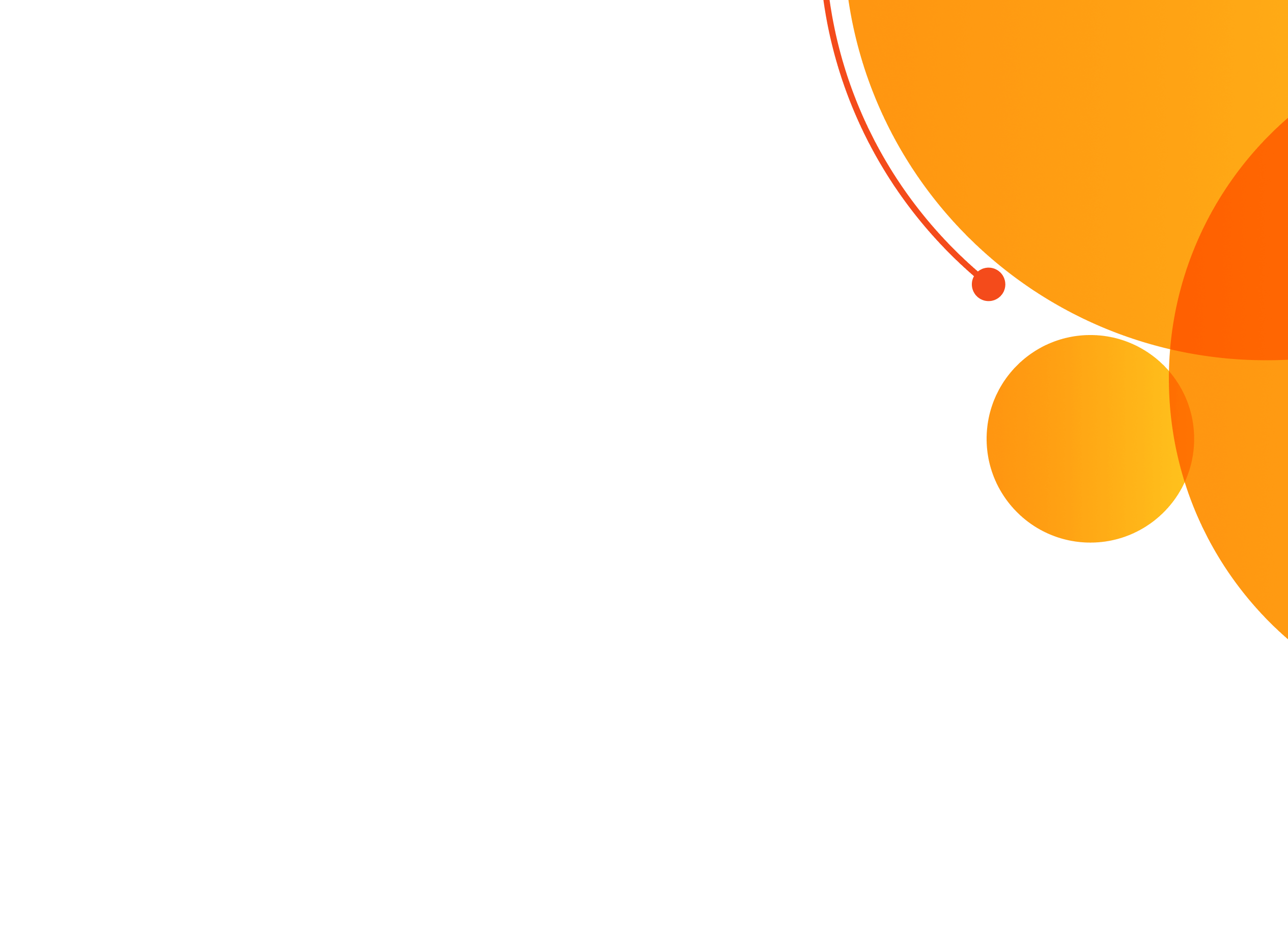
Use the buttons above to listen now.
Transcript - CSR Meets Holiday Team Building
Rich: On this episode of team building saves the world,
Baylee: even do it yourself. As I spoke about those like 12 to 14 different event experiences in a box that we have can all be self guided. Each one of these is built from the idea of a nonprofit. This is skill development, right? And we used to say all the time, if you’re not helping your employees get.
Better skills. You’re losing revenue. Again. They’re not maybe not that raw, raw team build, but they’re where you get to come together and just make a difference together.
Rich: Hello team. It’s me, your old friend, Richmond and Zion host of team building saves the world show where I speak to thought leaders from around the world, discussing variable strategies and to help you and your team build a better work. And today, we’re coming up on the holidays because we’re talking about corporate social responsibility with the creative director of Team Bonding, Bailey Goldstein.
And speaking of Team Bonding, let’s share some love with my supporters at Team Bonding. If your team is ready to experience teamwork to the power of play, visit teambonding. com to learn more. Now team, please join me in welcoming my guest, business development manager and old friend of the show, Baylee Goldstein.
Hello Baylee
Baylee: hello! Hello!
Rich: So I’ll have those guys tied up under the table just to applaud you, Baylee. Isn’t that nice? How are you doing today? I’m doing well. How are you?
Baylee: Very well. Very well. Thanks for asking.
Rich: So we’re talking about CSR, but just to remind my team out there, tell them a little bit again about yourself and your background and how, how it folded into.
Baylee: Yeah, absolutely. So I just grew up around the team building events world, and then I started in event planning and then. Really, for me, I was doing a travel event planning and then the pandemic hit and we were kind of in this weird world. So I personally actually went and did 1 semester of getting my social work degree and was really just getting in that world of.
Kind of social work and helping people and everything like that. And then at the same time, team bonding was kind of working to figure out how to work with companies, um, a level where they could reach individuals virtually and everyone was living in this time where they wanted to help people, right?
Like they were stuck in their house. They couldn’t do anything. They wanted to help people. Um, and we were getting reached out to by companies, just like, how could we help people? And that’s like kind of how this grew. I kind of left what I was looking at doing in school and came to team bonding to, like, assist with, like, how we could make this measure corporate social responsibility itself stands CSR, right?
So that’s what CSR stands for, right? Um, it’s the idea with a company of how they can strategically align their initiatives, their core values, their business strategies with charitable events. Um, there’s a big note of, like, sustainability in there, um, and a lot of measuring and reporting. So it’s not just.
them looking to do like one off events. They’re looking to like take their entire business strategy and have their employees get involved and have like a broader scope of volunteerism within it. And then they measure and report that. So a lot of companies are coming to us saying like, we need a better way to like communicate with our employees, get into CSR, do all of that.
Um, and that’s kind of like where I got to where I am now.
Rich: And of course, speaking, speaking of CSR, uh, we have some statistics here given me by my lovely producer, Anna coming from 360 match pro it says like 55 percent of employees would take a pay cut to work for a socially responsible company and employees who participate in corporate giving have 75 percent longer 10 years with their companies.
It also says 96 percent of the volunteers would like their companies to match their donations and, but those, those same people also volunteer, uh, with their companies, they reported having a positive company culture. So there’s positivities and all of these things, but I want to talk about your insights, like what do you see as the importance of CSR?
Especially in today.
Baylee: Yeah, I think it’s so awesome. I think it’s so interesting, right? Like today nowadays, I think Different individuals choose to work at the company for a different reason, right? They’re choosing to work at a company because they have more vacation time. They’re choosing to work because they’re remote Um, I don’t think for some reason certain generations are always thinking about like i’m doing it for work.
I’m doing it for money They’re thinking about their quality of living right? We’re having children later. So these individuals who are Who used to at 23 24 support families, you might not be having it too late to mid thirties, maybe early thirties. So you’re not thinking as much about, like, I need this money.
So you’re choosing a company on a different standard. So you also want to care about your company, right? Like, right now we’re researching products to see what they’re doing, what they’re good for, and what they’re good for the environment before we’re buying clothes. We can, we might look at the company to see, like, is a sustainable clothing brand.
So they can people are doing the same with their company. We have some companies that we work with who survey their employees, and they said they like their company more because of this event that they did with us, or they’re more passionate about their company, or they’re proud to be an employee because they are doing these, these volunteer events with us, right?
And yeah, so I think from the inside of it, it’s really interesting to see that I even was at dinner last night with one of my friends and they were, their company allows them to have three paid days off to go and volunteer. And then they have like, uh, something that they can search through and it’s either localized events, or they can do virtual events or different opportunities like that.
And that’s what she was raving about through dinner. She’s worked there for 7 weeks and that’s what she was talking about, um, about our company. Right? So it’s, it’s real proof that this is what people like.
Rich: Nice. Very nice. And we like it too, obviously, because I mean, I can remember years ago, we didn’t actually have a CSR specific team.
We, we, we had charitable donations and we had, uh, the, the events that were filtered around them, like your old bike builds and so on and so forth. But what is it that the CSR team does now?
Baylee: Yeah. So the CSR team does now is a few different things. Um, right now, if a comp, if a company comes to team bonding and reaches out and they want like a volunteer specific event, um, and this is kind of the difference where you dive into, right?
We have events where we might have a bike build where you build an event, we pick the nonprofit for you. We do that different things. But if a company comes to us and they’re like, we have a specific thing that we have to meet, like we want to be sustainable or our company values are this, we actually can work with them, find a nonprofit that partners with them.
So we’re really more like building it from the ground up. We can find a partner that part, like a nonprofit that partners with them. All of corporate social responsibility events that we work with typically partner with a nonprofit. So we’re finding, we’re serving a need, verse like making something that helps someone and I know that’s hard to explain, such as maybe if we do a bike build, we find a nonprofit that needs it.
But in corporate social responsibility, we’ll find a nonprofit, ask what they need, and then create an event that solves that need. So that’s what we’re doing. We’re finding a nonprofit that partners with that company’s core values, or we’ve previously already found nonprofits in our portfolio that helps value.
So if they come to us and they say, we’re really interested in helping veterans, we’d be like, great. We work with 3 different veteran organizations. 1 veteran organization is asking for letters and flowers for their individuals that they’re placing in houses. Does that match with your need? They may say yes, then we’re able to work with them virtually hybrid or in person to solve that need and partner them with a nonprofit.
And then we send the metrics after. So we’ll say you had this many volunteers. This is how many hours it took. So kind of that. We’re also doing that metric version of it.
Rich: So give me some examples. I know we can’t talk about specific clients, but give us, what are some examples of, of the, the events that we do that include CSR elements?
Baylee: Yeah, I think that’s incredible. So one of them may be like, let’s look at our classic bike bill that we talked about that we mentioned quickly. So bike builds may be creating a child’s bike to give like a gift for the holidays, which is awesome. But we recreated that to create bikes for the biosphere. So one of the things in corporate social responsibility is sustainability.
Right? So thinking about what you’re producing and what you’re bringing to the air. So, um, an adult bike, taking an adult bike to work, um, is an awesome concept because you’re going to be, instead of using your car or public transportation, you’re going to be using green energy. So we created, um, an event around that where volunteers come together.
They learn about what it is, like what. In the biosphere, it’s like to do sustainable biking. So that’s like starts with that. And then they build this bike. And then we’ve worked with two different nonprofits. And this is how we built it around. So one of them may be Dress for Success. They’re an awesome nonprofit who works to help women get to work.
So maybe we’ll donate to someone like that. We’ve also worked with the Coven House, who’s a homeless youth shelter. And these individuals who don’t have access to transportation, about 46 percent of. The US doesn’t have access to public transportation, so someone who is homeless may not be able to get to work.
So we’ll produce a bike for that. And the idea behind this is instead of really just every element of this, instead of having a team build, teaches you something. So the icebreaker teaches you about sustainability. Building the bike actually helps people to have a more sustainable workforce. And then we partner with these nonprofits to create it.
Another great one would be Operation Gratitude. They’re an awesome nonprofit who helps with individuals, um, who go overseas and pack things for soldiers. So we worked with them, we met with them and said, what do you need? Like, what could help you? And paracord bracelets. And if you’ve never heard of them, they’re these little bracelets that you wear around your wrist.
Um, when you’re in battle, it can be even a police officer can wear one. It can be, um, someone who’s like in battle in the field, as I said. And we create an entire event. We can ship to like 20, 000 people, right? So if your company is all individual where you get this kit and we leave you virtually to build a paracord bracelet and then that is worn and sent back to someone and it can if your parachute parachute breaks can be used as a parachute cord.
If your shoelace is untied. Can use a shoelace. You can actually break these apart and use each individual thing to so something. So I hope that answered a little bit of like what the events are. I could keep going on more events, but
Rich: what number are we up to? How many do we even have now?
Baylee: We have about 42 different kind of events that work with specifically with nonprofits.
Yeah. So we have a great portfolio of nonprofit based events and I think that It can keep going based on what the clients are. We have ready to go, like experiential kit events. We have 12 different versions and those range from teddy bears for the troops, the paracord bracelets, military care kits. We have a great STEM backpack kit that helps create backpacks and note cards for students.
We have a really unique mindfulness event that works with the girl scouts, where you, where we’re helping to prevent, um, mental health issues with students by creating these like mindfulness kits. So. They’re really cool and they’re all unique and all, again, partner with a non profit.
Rich: If we have 40 some, how come I’ve only led like a dozen?
Right? You’re thinking that? Yeah, that’s just what’s coming to my head. There’s so many more I could be doing. But let’s talk about it because if you say I’m a manager and this is what I want my company to do. First off, how do I balance getting into the CSR world? With maintaining my business goals. Yeah.
Baylee: So I think a lot of it comes with like leadership, right? Like the companies who choose like ingrained CSR into their leadership. A lot of times this happens within the HR of a company that they’re looking at, like what their commitments and goals are within the company. And typically, like you said, I think at the beginning company, like.
People love to have their donations matched. So I think a lot of times this starts with like an employee saying, I donated to this. Will you guys match it? So I think that sometimes is where a company starts their wheels turning saying, okay, we need like rules. We need reasons that we’re matching it. We need to like align what we’re matching with our company values.
Um, so I think that’s like sometimes where those companies start the wheels turning and then this like CSR corporate social responsibility is typically already prebuilt and ingrained. Into a company before they’re say, reaching out to us, but they may have an issue or a barrier with how to implement it.
Right. So they might have, they might be a small company of a hundred people and they’re located in Boston and every single one of their employees is in Boston. So yeah, it’s really easy to say like today we’re going to work at a boys and girls club, but that’s not every company, right? Right. There might be a huge company, a hundred thousand employees, a midsize company, like 30, 000 employees, even a company with 1200 employees around the globe.
And that’s where we can come in because they’re coming to us saying, Hey, We have these goals. We need assistance with how to have all of our 1200 employees that live in 17 different states to do the same thing. How can you help us? So that’s kind of where we can do different things. Like, we have our. 30 plus facilitators around the globe where we can say we can do in person events, we can come to your location and we can build this and we can do an event like that bike build where we can do an event.
We’ve been have a really fun 1 that’s like, last for the troops where we teach people about how to do comedy and then we write jokes for our service members overseas to help their mental health. So we can do something like that or. We have these shippable events where we can ship to X amount of employees and lead it virtually, or they could do it themselves.
So typically that like step is they’re figuring out the problem they have. They typically have a barrier of how to actually implement their problems and then they’re coming to us saying hey We need help and we’re like great. These are the opportunities we can have with you So this
Rich: isn’t just something we can do in person.
This is something we can do virtually This is something we can do a hybrid thereof
Baylee: Exactly, and even do it yourself. Um, as I spoke about those, like, 12 to 14 different, um, event experiences in a box that we have can all be self guided by the volunteers themselves. And then we can add trackers. So we can tell exactly how many people finish the volunteer activity.
We typically ask for photos. We even go as far as like, reaching back out to the nonprofit and asking for photos of those, the ones that received, and we send those to our clients saying, here’s photos of it actually being used. We just did a huge teddy bear event where we already have been seeing like the teddy bears built by the volunteers sent to our nonprofit.
And then now they’ve already made it to the soldiers and we’re getting photos back of the soldiers holding the teddy bears. So it’s a pretty cool loop.
Rich: I want to talk more about this, especially want to dig in a little bit more into that DIY. But first, I hope you don’t mind. I do need to step away for a quick second and tell my team out there about a company.
We’re both very proud to be a part of Team Bonding. Team Bonding was founded over 20 years ago with one simple question. How can employees have a great time while fostering strong, authentic bonds between people who work together? No matter where your company is located, Team Bonding offers powerful, engaging, custom team building events designed to get the best out of your team anywhere in the world.
They’ve created a catalog of innovative events using the power of play as a learning tool and tapping into the correlation of work and play. Whether it’s Scavenger Hunt, to Jeopardy, to CSR, and just so much more, the team bonding of activities, be they live, virtual, or hybrid, maximizes the impact of team building with an accent on fun.
So visit teambonding. com to schedule your event now. Team bonding, when you want seriously fun results. And we are back talking CSR with Bailey Goldstein. Bailey, let’s dig into that, uh, DIY. Cause this is something I think we could, that people might, you know, dip their toe in a little bit more. So how can we help those customers out there who want to get into this to realize that a DIY is an easy choice to make.
Baylee: Right. So, um, that’s awesome. So if you were to go to team bonding and reach out to one of our sales individuals and be directed to the CSR sales team, they may ask you a couple of questions. It can be budget prided or can be guided based on your values. So, as we said, like, typically values can be any, like, anywhere within sustainability, et cetera.
Let’s say we spoke to you and you said sustainability is really big for us. Like, we really want to make the world a better place. A company, for example, that like, Okay. would be like Patagonia’s company, like the clothing brand. Um, there have a huge investment in wanting sustainable materials. Um, they want to reduce the carbon footprint.
So maybe a company like that, not saying we actually work with them, comes to us and they say like, but we want our employees to be involved in this. We’d say great. We have 2 different incredible events that work with that. We have a plant a tree. So every volunteer will get a kit where they get to open it on themselves and it’s all fully instructions and they would plant a tree and do 1 hour of volunteer time.
And we give them the seeds. We give them the instructions to soak the seeds. We gave them the soil to plant it. Um, we give them a really cool activity. They have to play it to learn about why planting trees is great. Um, and then they actually plant a pine tree and they get to leave it in their house and watch it grow.
We also have the Save the Bees event where they get to do, they taste local honey.
Rich: Love this. I love the bees event. I love the bees.
Baylee: Exactly. Yes. So they got to taste local honey. So really do like a four different honey tastings. They get to build a beehive. Um, and then they get to put it in there outside.
And we kind of talk about why bees aren’t that scary. We’re actually trying to attract a different kind of bee. Not one that stings you, um, just one that pollinates. So it’s really cool. Both of those are awesome. So we’d kind of like explain both of those. Talk about how again, we could do those in person or we could ship them to each person’s house.
And then it just gives a full guide. And then it includes a return label if it’s to the nonprofit. So if you were like, but we really want to help students with the bees, we’d be like, great, you can either do with your employees or you can build it and we can include a return label and partner with the boys and girls club and you can send that back.
So really we’re like, just going to talk to them about their mission and what helps them and then partner them with one of these. And again, each one of these is built from the idea of a nonprofit. So we met with a nonprofit, found a need and created this out of it. It’s really cool.
Rich: But if I’m doing one of these, how do I know that it’s been successful?
Like what’s, what’s the measurement we can give to that increasingly ephemeral person out there who’s trying to do this themselves? Yeah, absolutely. What do they know
Baylee: to look for? Um, if they’re just trying to track how many volunteer hours each one of their volunteers, their employees does, we’re able to specifically say each one of these kits was built to do 60 minutes of volunteer work.
So, that is, like, measuring them with a 60 minutes of volunteer work. If they’re looking to see what it actually does, then each of them also have statistics, right? Like, how many what is 1 tree planted equal a great example of that that I know, because we just didn’t event like that is we do a really cool event called the climate change challenge and you have to.
Defeat these warriors to, um, to help the environment. And we do that by giving an offering. And every time you have to defeat a warrior, you delete items on your phone, like photos, emails, et cetera. This blew my mind deleting like a thousand, this isn’t the right fact, but deleting like a thousand photos on your phone equals picking up a piece of plastic outside.
So there is a deleting digital and things on your phone equates to. Picking up plastic. So I always thought like a litter pickup was so important, but just housing these photos on your phone and everything can be equating to that. So we’ll give those statistics as well of like, how much we said, like, in the end, 50 of your volunteers did this that equated to about 70, 000 photos and emails being deleted based on 60 minutes.
And therefore that equated to X amount of plastic, like, reduced in the world. So, like, we’ll give those statistics, which is pretty wild. And then they. Okay. Can send those out in newsletters or like use that as however they would like. So I’m not
Rich: supposed to save photos on my phone for years and years and years like I do?
Baylee: Isn’t that crazy? Um, I’m actually like a really bad person with that. Oh, me too. I have about 79, 000 emails on my phone and I Actually just subscribe to the service that like deletes my subscriptions for me, because that event alone taught me how I was like equating to having like a dumpster outside of items.
And I was like baffled, but
Rich: let’s talk about the employees. Now, how do these CSR events impact them? Yeah,
Baylee: absolutely. So kind of a little bit of what you said with those like great statistics at the beginning impacts them as it enhances like the reputation of the company and therefore there’s like they have a positive public perspective.
So, therefore, if you’re seeing that this company is doing a lot of CSR work, and they’re hearing about these employees, they’re able to when you’re going to look for a job, or you’re looking on LinkedIn, it’s getting the reputation of the company up. So more people would want to work for them. To be able to do that.
One of the great ways we say when we’re doing the events for the companies is create a hashtag, create an Instagram, like really like flaunt this, do a hashtag when your volunteers are doing it. So that when you’re enhancing the companies, therefore, when you enhance reputation, you’re intact, you’re attracting like more talent and probably retaining more talent because once they’re there.
They’re happier. You’re also kind of like helping like proactively like stop that risk of like migration to another company because you’re like satisfied in a different way with your company. You’re already like thinking good things. Or for example, if you’re that company. In their public relations, you kind of already have that, like, crisis management that you can say, such as if something happens, you have, like, other things to push.
Sure. I know we’re talking more about the employees. So that’s other ways, like, where they’re just, like, already they’re getting there because of that. And it also increases employee engagement. Right? So the other version of is. It’s a way to connect with each other and do something together for a similar passion.
We typically find that when you’re coming together to volunteer together, it’s different than just doing a team build, right? Like you’re helping someone, you’re both like aligning your values and like assisting someone you leave with this like pride and happy feeling. We’ve done a lot of work with our events to make sure people feel the impact.
And every time we do an event, we kind of survey the volunteers to see like, did you feel this impact? And then we help to change the events if they didn’t. Like maybe we add another video of the nonprofits that they got what the nonprofit was, or we add photos of the receivers getting it because that feeling where you help someone just like feels warm and happy.
And that can help you like, again, stay at the company and also just like. Feel good about yourself and interact with another employee.
Rich: The one thing that I do notice is you’re absolutely right. When it comes to the giving back feeling and the fact that you are actually seeing reward, uh, you’re being rewarded with the visuals afterwards about, you know, how this, how this impacted the community.
How is it as a company, I can keep the employee going or even vice versa. How is it as an employee? I can tell the company I want to do more.
Baylee: And yeah, that’s a great one. I think it’s, I think some of that is. So, right. Like you implement these to how to keep the, how to keep them going. Yeah. So the other thing is, um, I think that’s a great note.
So one of the things that we thought was we partner with a nonprofit and CSS in our CSR department, right. To make these events. But the other thing is that companies have to wanna do these, right? Right. So a lot of times we say our events are dual impact. We also work to help the employee as well as helping the nonprofit.
So I think I spoke quickly about the, like a few minutes ago about how we have a comedy event. Yeah. Um, where we teach volunteers how to do comedy so they can write for the troops, a great CSR event. You’re working with the troops to create, um, to create jokes and help mental health. Right. But let’s talk about the reverse of how you keep, how this also helps the employees and keeps them going.
This is skill development, right? And we used to, we used to say all the time, if you’re not helping your employees get better skills, you’re losing revenue. So one of the things with learning comedy is it helps you become a better public speaker. It helps you stand better, feel more confident. It helps you engage with others better.
So we’re also skill developing in that event. We’re also helping people. So we’re helping your managers have like. Better skill development on their teams and helping the employees get better professional development skills. Also by any events that we’re working with, like a local nonprofit, you’re kind of getting community involvement.
So you’re helping the employee, like know that you’re there, like they might be their own personal communities. That’s like aligning with their own personal goals and improving like their own wellbeing. What was the second half of that question?
Rich: How do we make sure that we can keep them motivated to continue?
Baylee: Yeah, so that’s great. And then also, I think we were talking about a little bit of how they can talk, say that they want that. I think that’s what the company of like keeping that open engagement, like if a CSR department within an HR team is wanting their people to and their employees to do events or help volunteer.
I think it’s great for them to create a forum that allows individuals to survey to say, like, this is what we want to do and have open options for it. But yeah, I think that by just doing the events and buying grading in our events, other versions that help the employees, I think that’s what keeps them going, right?
Because we’re thinking about them during these events. A few things that employees might want to do is either meet new people, right? Especially meet leadership. Leadership might be how they get up. So then that’s another one. They might meet with us and say, like, hey, we want to do an event. That helps individuals, but we also really want our employees to meet other people and engage in skill development.
So we’ll look at our portfolio and say, like, okay, this is actually a great event. Nexus, for example, at Team Bonding is an event that we do, which is key locking, you unlock keys. Um, that’s a great networking event. So we created a CSR version of that where volunteers get together and they answer skills based questions to find each other, to unlock it, forms their groups, and then they work together to do a volunteer effort.
So we’ve taken that, like, skill development, team build, and turned it into a CSR volunteer opportunity. We CSR ify our team though.
Rich: And of course we’re getting into the holidays now, which is the perfect time if people have not, you know, taken the plunge in the CSR to do so. Do we see actually more companies even come across during the holidays and say now’s the time?
To, to spend the budget to actually get, uh, some CSR moving.
Baylee: Yeah. I mean, I think that’s a great, great thing. This is what I found in the three years I have been in CSR is that one companies in September do this thing where they’re like, Oh wait, like I’ve been saving my money all year and now I have money left, so I feel like that’s what happens, right?
Like you’re, you’re, you’ve kind of been gone all summer, maybe doing things and stuff like that. And all the whole rest of the year, you’re like saving your money and making sure you have money for the end of the year. And then September hits after Labor Day weekend. And it hits and they say, wow, we have money.
And then that’s a great time to allocate it to the holidays because of a couple of things. You’re wanting to keep your employees happy at the end of the year. And you’re also like hoping you’re going into a new year and it’s a really busy end of year timing. So yes, I find the end of the year is excellent for that.
And then it’s really great also because when you think about like what’s happening in this time of year, you have students going back to school. You have Veterans Day around November. You have great like experience, like great, like. timing for helping people during this season. You also have the stress of buying gifts for the holidays and different things like that.
So really great ones we have for that would be. Like, Mr. Roboto is an event that Team Bonding does, but we’ve CSR’d that version and done it where you really learn about students STEM education, you build a robot for students, and then you give the gift of STEM for the holiday season. We also have an awesome kit for that, where you, it’s called Give the Gift of STEM.
Um, so when you’re thinking about all these, like, parents during the holiday season, you might not be able to afford it. One of the things with CSR, so when you’re thinking about CSR Brain, Would be stem or digital inclusion or any of those different items of integrating into our school systems or integrating into classrooms.
That could be like a barrier that you’re trying to reach as a company. And then something like give the gift of stem would be awesome because you’re going to work to create a paddle boat with us and paint it and then give the student that for the holiday season. So they get like a toy in.
Um, and then we’re not just thinking about giving them a present, right? We’re thinking about giving them a present that will help their future. So they might learn about, like, the paddle boats, or how they work. They might get that inspired by that. There’s actually this, like, really this barrier within stem but they don’t know how to do it.
To and semi science, technology, engineering and math. So students aren’t introduced to this. And by 2028, 8 percent of occupations are actually going to be in the stem world. So we need to start pushing our students or sorry, the world of stem occupations is going to grow by 8 percent projected by 2028.
So, like, we want to push our students into being inspired by that. A lot of women and minorities have a barrier to that. So that’s like where we would work in CSR. Like, how can we not just give a toy? How can we give a STEM toy that will help them in their future and help push them and help them be inspired?
So that’s kind of like that CSR noggin when you think about like the holiday gifting season.
Rich: What about any potential challenges? What kind of challenges might somebody face when they’re trying to build one of these events?
Baylee: Yeah. A, they might not have like the knowledge to it of like where you would start, um, like which barrier reaching what nonprofit to help you with the different items of doing this.
And then also. Like you said, they might reach out to do an event for the holiday season and maybe just end up giving toys and then that’s not really like helping with a barrier or we were working with a client and they were kind of trying to think about. Yeah, you just like get lost of like what to do.
Like do I make ornaments for people? Do I go bowling for the holiday season? But like all of that is just kind of right. Like that surface level of things you can do. CSR is at next notch. So we’ve reached out to non profits such as the RAINN Foundation in New Jersey. They’re an LGBTQ youth homeless shelter.
And we’re working with them on like, how can we actually help you for the holiday season? And they do different like gatherings once a month to get people to come together. And if you didn’t know, LGBTQ youth is one of the highest rates of homelessness. So you look at homeless youth, LGBTQ plus is like a big rate of that.
So we’ve reached out to them and said, like, how can we help you? And Then, therefore, we may do a gingerbread event where we get to donate the gingerbreads to this youth center so that they’re able to do that. So we’re like, touching that during the holidays. We might reach out to the boys and girls club and say, like, what is a barrier that you’re focusing?
And something that was really interesting that we’re working with them right now on is a lot of the parents just like so much time. I think it’s like 80 hours or something takes into finding gifts for your child for the holidays, and then they can’t afford it. And they can’t do anything like that. So we’re working with them to work with volunteers to create.
These volunteers are doing research online of stores, Amazon, et cetera, to find gifts under 30 that also have to do with stem so that science, engineering, science, technology, engineering and math. So they’re fine. They’re doing all that shopping at 80 hours at that. Parent doesn’t have because they’re working two, three jobs, maybe one job to go around.
So we’re doing that ahead of time. And we’re also finding low cost and we’re also finding it so that it helps them in STEM. So that’s like kind of like the difference in the CSR world is we’re really helping to make sure you’re actually making that really big impact within the communities around you.
Rich: So while we don’t want to denigrate anybody out there who looks to this as just charity, for example, the, you know, the, the building, the bikes and giving the bikes away or the building, the robots and giving the robots away. That is great, by all means, continue to do so, but what we’re offering is a bit more, a way of, it’s the, it’s the old adage of you can give a man a fish or you can teach a man to fish.
Baylee: Perfect. Perfect. Yeah, I think that’s a great way of putting it. Yeah.
Rich: So speaking of fishing bales, uh, I’m fishing for a little bit of your own personal experience. Do you have anything you want to share with the group? Like an inspirational moment that you saw during an event again, not giving away anybody’s names or whatnot, but, um, just an example that you have seen that can actually get these people a little more motivated to
Baylee: up and move.
Yeah, so I have, like, the incredible opportunity to get to go to our in person events, as well as go and see some of, like, our, go into some of our clients offices. I also get the opportunity to, like, watch them virtually, and it’s really cool when you work with these non profits. Recently, and we, I went to an event in D.
C., actually, probably not recently, like, a year ago I went to an event in D. C. And we got to do, it was all for creating students in STEM. And then I actually became a courier because at team bonding, if you don’t know, we are men of many hats. So the person who was donating, bringing the items to the nonprofit canceled last minute.
So I actually had a car, so I got to go into the nonprofit and donate all of like the STEM bill that they created. And I walked in and all these students were, like, asking me different questions about, like, who I was or anything like that. And then we were donating, like, little sem racers. And then I got to, like, shake hands with the person that boys and girls club.
And he was, like, you don’t even understand what this means to us. We don’t really have the funding to get any of these items. And then what was really cool is, again, that difference in CSR. So when we were donating these, we had created an entire lesson plan for how to integrate what we were donating into the Boys and Girls Club.
Like, what should they do now that they got the donation, right? So we had created this like entire list for them of like, this is what you do. Like, you’re going to race the cars, then you’re going to build them, then you’re going to do this. So they just like hugged me and thanked me. And we got some like photos of them doing it.
And there was a couple students there and we were showing them like how to use the flashlights to race the cars. So that was really cool. And then the other really cool thing is really the difference of, like, meeting with these nonprofits at the start and asking them what they want, because I think they always get the reverse, right?
They get that call that says, hey. We have this to donate. Like, what can you take? Yeah. Yeah. Yeah. Sitting with them and saying, we a great nonprofit, which we’ve talked to, I think, previously before it’s called calmer choice. They’re a suicide awareness nonprofit based out of Cape Cod, Massachusetts, right?
We met with them and we said, like, hey, what can we do for you? Like, what is your mission? What’s your thoughts? How do you work with people? And we built from scratch this mental health resource kit with them. And now it goes to many nonprofits. We’ve worked with the Girl Scouts for it. We’ve given it to, we’ve had just people give it to people.
They know we’ve worked with all the LGBTQ youth center with a Trevor project. Countless names of these nonprofits we’ve worked with now that they helped us create this. And it includes like a glitter jar that you shake and you look at and it helps you calm down. But yeah, like when a nonprofit’s face says like, you’re actually asking us to help.
Like what our problems are and you’re going to solve them is just really, really cool.
Rich: Plus I was just doing a paracord not too long ago and it was, I, I, I almost teared up, I swear to God, I almost teared up just reading the chat that was going on because how many people out there are veterans? And they were all sharing in the chat about how the, it didn’t matter what came across to them on mail day, just to get something from home that just reminded them why they were there in the first place.
It’s, it means the world to these people. And now I have a nephew who’s in the army who might be now deployed somewhere. And, you know, just to think about that, it really does make that impact that you’re looking for.
Baylee: No, I, yeah, I very much agree. And I, and you’ve worked with one of these events with us before and it’s come out incredibly.
But I think like when we loop it back to like where I started when you get to like put your own passion into it, um, mental health has like always been like my aiming goal. I like had a lot of friends who struggled in high school and things like that. So when I got into this work and got the opportunity to work with companies, we met this amazing nonprofit called find your anchor.
If you’re listening to this and you can look them up, they’re really, really cool. Yep. We, they have a mission to send out mental health boxes into the world and we were like working with them on like other ways. And 1 of the things we found was it’s hard to have a connection with someone. Like, you might find this box and you might read all the paper, but like, where do you get to see a face and a voice?
So we created this really cool event called messages of hopes. I’m changing my lens. Yep. Yep. And which has led 1 of these before. And the idea is to learn about find your anchor and learn about their mission and learn about where they come from. Oops. And then kind of just talk about, like, how to use your voice and how to stand on camera and then you can either record a message audio only or on video and we include it in this box.
So when someone’s struggling with mental health and they find one of finders boxes, they can scan this QR code and hear the voices. And faces of thousands of people and the really cool part about like many companies working to do this event is the more people we get. If you’re struggling with mental health, it’s really nice to hear someone who you relate with.
They’re like, see someone’s face that relates to you. The more and more people we can get to do this message helps with that. So they’re just like, really like passionate events and they’re really make an impact and. Again, they’re not, maybe not that raw, raw team mill, but they’re where you got to come together and just make a difference together.
Rich: So Bales, I could go on and on about this. Cause we have so many things we could talk about specifically getting into the events, but I want to ask instead, can you just, for, for a final question here, any advice you want to give to that HR rep out there or that VP out there who has heard this knows the holiday season is coming up.
And really wants to make a, uh, an impact in their CSR initiatives.
Baylee: Yeah, I think that my, my feedback or my advice would be to go on to our website or reach out to one of us. Um, say that your mission is within corporate social responsibility or within nonprofits during that holiday season. Let there be no barrier to you, whether you’re employee of thousand employees, whether you have.
People remote in person or whatnot. Just tell us what you need and we’ll see if we can meet that. And typically we can in any different way. We have a huge portfolio. He said about 42 different events and counting and we have a lot of different political things. So the 1st, the worst thing you can do is call or email us.
That’s the scariest thing. And then we’ll take it from there. I think what we say is we just make it really, really easy. You can spend a lot of time doing all this or while your coworkers, your companies, your employees, by just letting us handle all of
Rich: it. Bailey Goldstein, everybody give a big hand. Thank you Bailey for coming on.
Baylee: You’re always great.
Rich: Thank you for sharing that with us. And did you have a good time? I did have a good time? I did! And now we’re going to have an even better time. Because I think you might have forgotten what happens at the end of this show. It’s time for a speed round.
So, I know you’ve done this before, but just to remind you, what’s going to happen is we’re going to give 60 seconds of music and I’m going to ask you a series of completely innocuous questions. Your objective is to try to answer as many of them as you can, as quickly as you can. You feeling up for it?
Baylee: Oh, I’m up for it.
Alright. That’s another question.
Rich: Ha ha ha ha. Let’s find out together. Once you hear the music, I’m going to start asking questions. Away we go. Can I open
Baylee: chat to you, E.
Rich: T.? What’s your name? Bailey. I know you have a dog. If you could ask Blue one question and get an answer, what would it be?
Baylee: Ooh, um, oh my god, that’s fast enough.
Um, what’s your favorite activity? I don’t know.
Rich: Nice. Uh, what are you most proud of? What accomplishment are you most proud of?
Baylee: Um. I’m really most proud of managing. I think that was like my scariest feat and I’m now managing six girls and that’s been scary.
Rich: Excellent. Um, what’s your favorite childhood memory?
Baylee: Um, when we were younger, we got to go and pick out our own suitcase. Cause we were going to travel three different countries in Europe. And I just remember picking out this like blue corduroy suitcase. And that’s a good memory.
Rich: Excellent. What is your favorite Hanukkah gift you’ve ever received?
Baylee: Ooh, um, I received like a Polly Pocket that got me really excited at the time.
Rich: What would you, what would you do? You were invisible for a day.
Baylee: Oh, if I was invisible for a day, I would go like mass shopping and see all this stuff, I think.
Rich: Haley, you got six.
That was great. I have never had anyone do this and be so in depth in there. Oh, it’s wonderful. I love it. And you guys, if you ever get a chance to step into the office, uh, everybody usually brings their dogs. If you do get a chance to go into the team bonding office, go meet blue. He’s beautiful and wonderful and hates me.
My Bailey. Thanks again. How can everybody find you when, if they need to find out more about CSR or to get in touch with that’s
Baylee: incredible. Um, you can either start by reaching out on team bonding. com and start with talking to like our robot chatter. You can always reach me at Bailey at team bonding. com.
It’s B A Y L E E. Um, if I, if you’re going to spam me, you’re just going to write to my spam, but if it’s a real CSR request for me giving my email. Then I will respond to it. Thank you
Rich: so much, Bales. And thank you, my team. That’s it! We’re wrapping up yet another episode of Team Building Saves the World. If you’ve enjoyed this episode, whether you’re new to the podcast or an old fan of the show, please be sure to share it with everyone that you know.
Whether they’re a co worker, a friend, a family member, it helps us to share all of this really vital information. You can find out all about us, including all past episodes, at teambonding. com slash podcast. You can also find us wherever you find your favorite podcasts. Super podcast! Apple podcast, Spotify, wherever you go to listen, my friends, we will be there.
And don’t forget to look for us in all the social medias at team bond podcast. Leave me a message. Tell me what you liked about the show. We didn’t like about the show. If you have a topic you want to hear about that we haven’t covered, let me know. That’s how you become a vital part of my team. So my friends, before we say our farewells for this episode of team building saves the world, please never forget if you are within the sound of my voice, you’re on my team now, and I am forever going to be.
On yours, happy Holidays team. I’ll see you next time.
It’s been said that you learn more about a person in
Baylee: an hour of play than in a year of conversation, so why not put your coworkers to play with the help of the team at Team Bonding? Team Bonding was founded over 20 years ago with one simple question, how can employees have a great time while fostering strong?
Authentic bonds between people who work together. Their catalog of
Rich: innovative events includes scavenger hunts, jeopardy, and
Baylee: much more. Each activity, whether live virtual or hybrid, maximizes the impact of team building with an accent on fun. Visit team bonding.com to schedule your event now. Team
Rich: bonding when you want.
Seriously, fun results.
November 7, 2023
On this episode of Team Building Saves the World we dove into the distinction between corporate social responsibility and regular charitable team building events with our CSR Creative Director Baylee Goldstein. The holiday season is a perfect time to bring your team closer together. Join us as we explore creative holiday giving ideas that not only foster camaraderie but also benefit those in need. We’ll provide ways your team can give back year-round and how to make a lasting impact this holiday season while improving employee engagement & company culture.
About Baylee Goldstein:
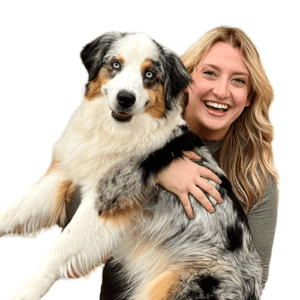 Baylee Goldstein is our CSR creative director. Baylee comes with a wealth of experience in the events and hospitality industry. Her background in corporate events, wedding planning, and business development provides Baylee with the knowledge to succeed in the volunteer management world.
Baylee Goldstein is our CSR creative director. Baylee comes with a wealth of experience in the events and hospitality industry. Her background in corporate events, wedding planning, and business development provides Baylee with the knowledge to succeed in the volunteer management world.
Baylee is a graduate of the Pennsylvania State University with an Integrative Arts degree focusing on Graphic Design, Advertising, and Visual Arts. Baylee enjoys traveling, trying new foods, and mostly spending time with her puppy, Blue, a mini Australian Shepard.
Check out our blog on How Companies Can Give Back During the Holidays in 2023 here!
We used to say all the time, if you're not helping your employees get better skills, you're losing revenue. It helps you stand better, feel more confident. It helps you engage with others better.
Baylee
More great podcast episodes.
Season 6 | Episode 18
That’s a Wrap!
Season 6 | Episode 17
Work-Life Integration
Season 6 | Episode 16
Laughing it Off
Season 6 | Episode 15
Corporate Volunteerism in Action
Season 6 | Episode 14
Collaborative Play at Work
Season 6 | Episode 13
The Science of Supportive Workplaces
Season 6 | Episode 12
The Power of Being Present
Season 6 | Episode 11
The Age Advantage

